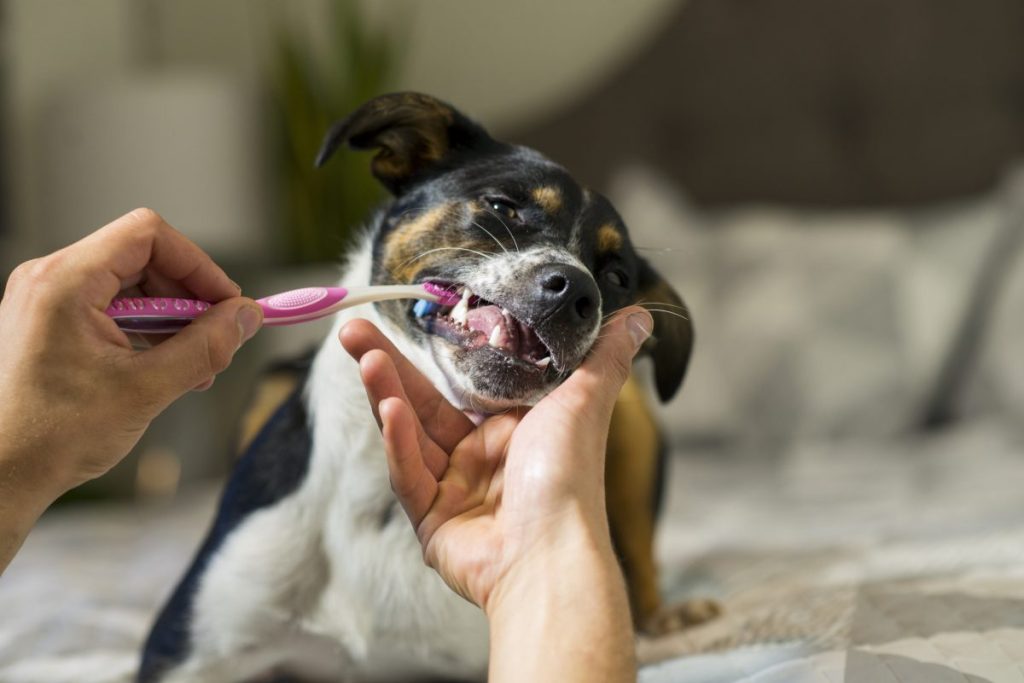Question:
My dog won’t let me brush his teeth. What should I do to keep his teeth clean and healthy?
Answer:
If your dog is not a fan of teeth brushing, don’t give up hope yet! From a dog’s perspective, teeth brushing is not a natural thing. We shouldn’t expect that all dogs will take to teeth brushing easily — some just have to get used to the idea!
Training your dog to accept toothbrushing
Training your dog to the toothbrush is no different than leash training. It takes time, patience, and ensuring that your pet perceives each as enjoyable and non-threatening by your pet. Be sure to load on the praise and don’t move to the next step unless your dog seems comfortable with it.
The goal is to brush the outside surface of teeth in the area where teeth and gums meet. Your brushing efforts should only last for one to two minutes, then discontinue the session. Keep it fun and reward your dog along the way!
How to brush your dog’s teeth
- Start by rubbing your bare finger along the gums. Do this for a few seconds and build up to longer periods of time.
- Add some dog enzymatic toothpaste to your fingertip and massage your dog’s gums. Experiment with different flavors of pet toothpaste (chicken, liver, malt, etc), but never use human toothpaste.
- Apply some dog toothpaste to a pet toothbrush and brush the outer surfaces of your dog’s teeth and gums.
Teeth-cleaning alternatives
Another at-home dental option for pets that don’t tolerate brushing, but will allow handling the mouth area, is using a home dental sealant (such as OraVet). You can apply this dental sealant to your dog’s teeth once a week with your finger once a week. It provides a preventative barrier for the teeth.
Dental rinses and sprays are available as an anti-plaque step. You can spray or wipe them on your dog’s teeth. Dental treats and diets are another tool that can be helpful in a home dental care plan — but don’t rely on them as the sole form of dental care.
Be sure to see your veterinarian regularly for professional dental prophylaxis. The frequency of recommended cleanings will vary depending on your pet’s health. Generally, every six to 12 months is best. The most effective dental plan for your pet is utilizing both professional veterinary cleanings combined with home dental care for your pet.




